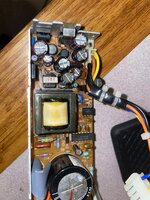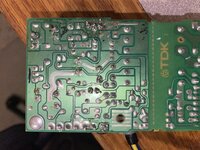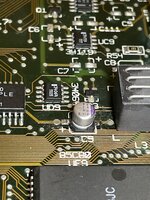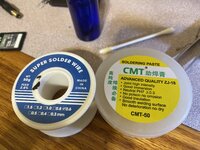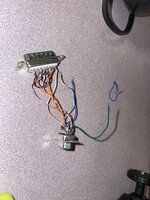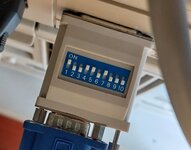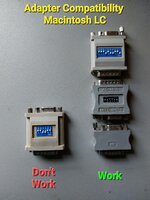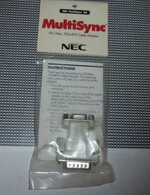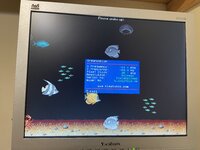luRaichu
Well-known member
I recently picked up a trashbin Macintosh LC and Apple Keyboard II all for $20. The LC was caked with dust, the keyboard was caked with white fur. Cleaned both up and they’re almost good as new. Then I plugged in the power supply. 12v was basically nonexistent. Opened up the power supply, (TDK 699-0153) caps leaked, so I replaced them. I also replaced those CR51 and CR52 diodes, as I thought they were voltage leaky from cap juice because touching the case would give you a “slow” electric shock (what I mean by this is that you could feel it coming and remove your finger before it does). I didn’t replace the 50v cap that’s next to the huge one. Anyways after the recap the PSU would make a fast and continuous ticking noise without load, before the recap the ticking was slower and would fade in and out. I measured after I replaced the caps but before I replaced the diodes and the voltages seemed in spec but fluctuated ~1v. I didn’t know then that the PSU is supposed to tick w/o load, so I went ahead and replaced the diodes. Still ticking w/o load. I didn’t measure the voltages after the diode replacement and just went ahead to connect it to the motherboard. I left it a few seconds, no boot chime or anything… While connected, I measured the voltages. It was only giving 0.1v on both rails! I disconnected the PSU from the motherboard and ran it w/o load. It ticks only once, still 0.1v. So then I focused my attention on the motherboard. I had a little charger brick and a USB cable that gives you the power from it. The brick is 5v, 3.1A… close enough I thought. I connected this to the 5v rail on the motherboard and got nothing. Will this motherboard make video/chimes only with 5v? Also the motherboard’s caps all leaked. I teared them off last night. I’m not a soldering wizard by any means so it’ll be a headache to put new SMD caps on. The caps I got don’t even have long legs like the originals! They barely extend past the plastic square. The lone cap in the photo was a test that night to see how hard it is to solder on caps.
All in all, I think I’ll replace the PSU with a Mean Well RPT-60A if I can’t get the TDK to actually work. The Mean Well seems to say it gives 4A. The TDK gives 3.24A. Will my board be damaged by higher amperage? Does a 1A difference really matter in electronics?
When I got the LC, the motherboard was very dusty and the dust and cap juice combined to make a sticky goo. I cleaned it up but I wasn’t able to clean anything under the chips. I want to dishwash this board… but my dishwasher’s broken and I won’t have it for months. I want to dishwash the board before I recap, but I don’t want to wait months. I also don’t want mineral traces on the board nor do I want it to rust and die in a couple years, I believe dishwasher detergent will solve that. If only…
All in all, I think I’ll replace the PSU with a Mean Well RPT-60A if I can’t get the TDK to actually work. The Mean Well seems to say it gives 4A. The TDK gives 3.24A. Will my board be damaged by higher amperage? Does a 1A difference really matter in electronics?
When I got the LC, the motherboard was very dusty and the dust and cap juice combined to make a sticky goo. I cleaned it up but I wasn’t able to clean anything under the chips. I want to dishwash this board… but my dishwasher’s broken and I won’t have it for months. I want to dishwash the board before I recap, but I don’t want to wait months. I also don’t want mineral traces on the board nor do I want it to rust and die in a couple years, I believe dishwasher detergent will solve that. If only…



